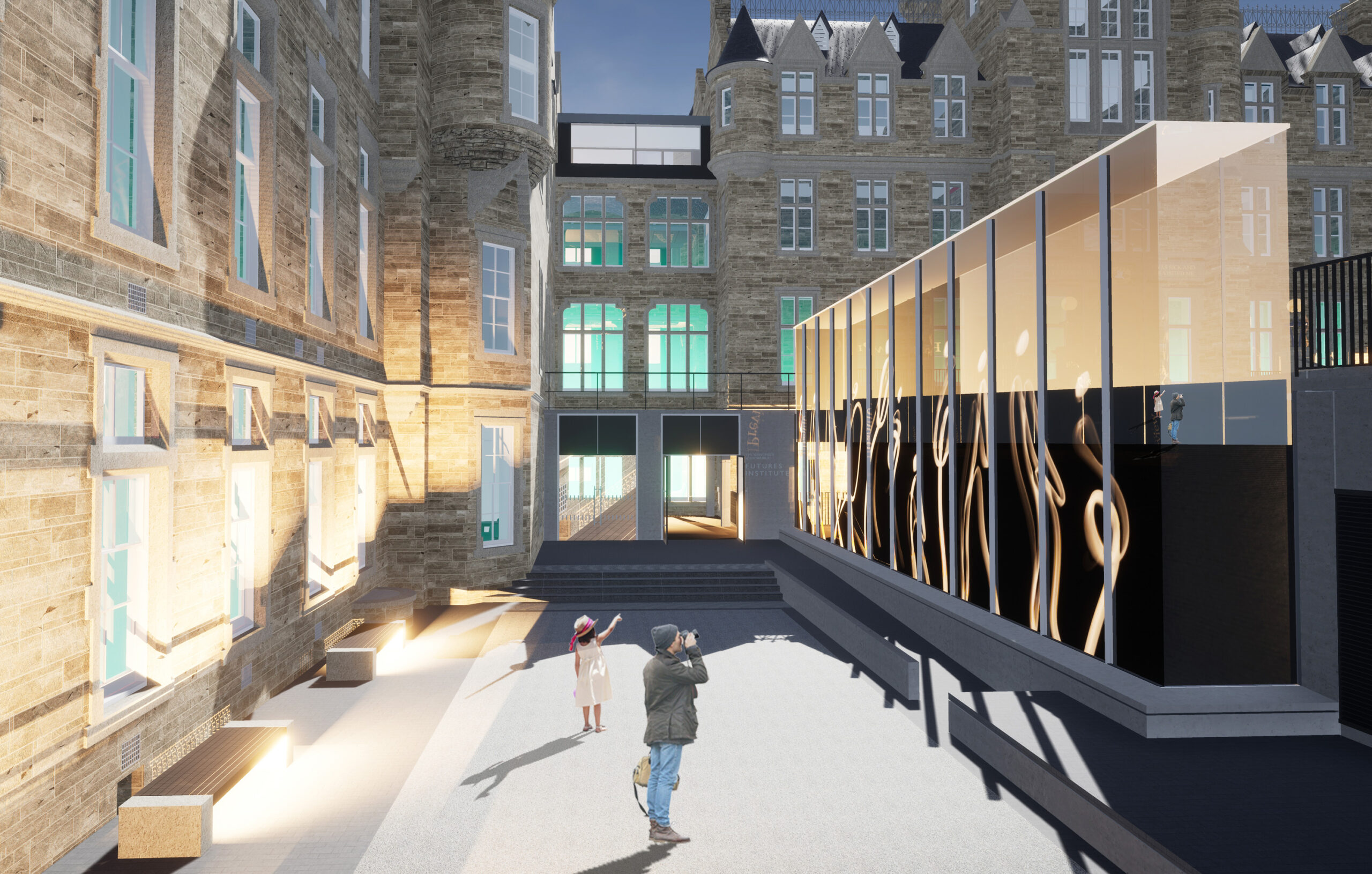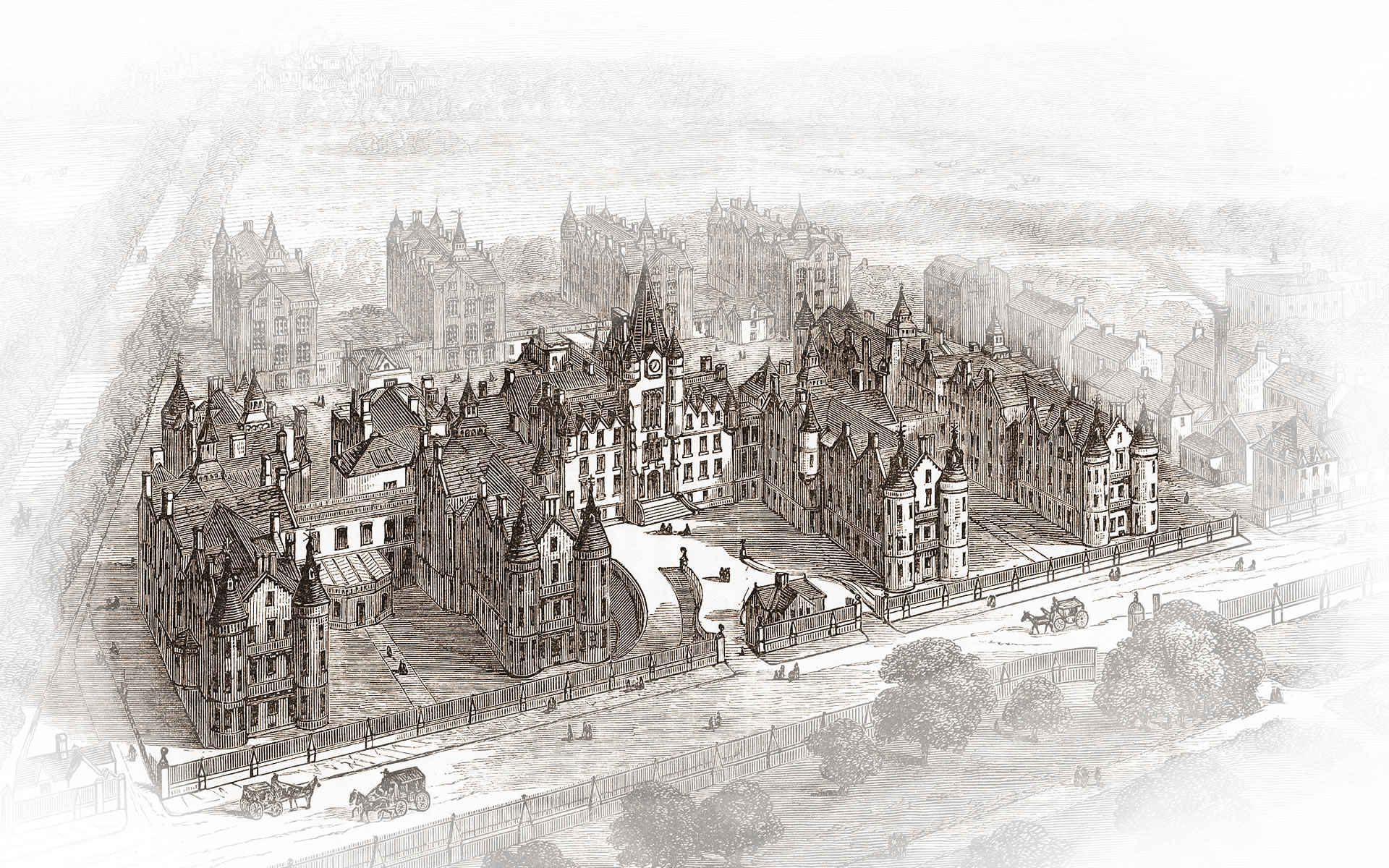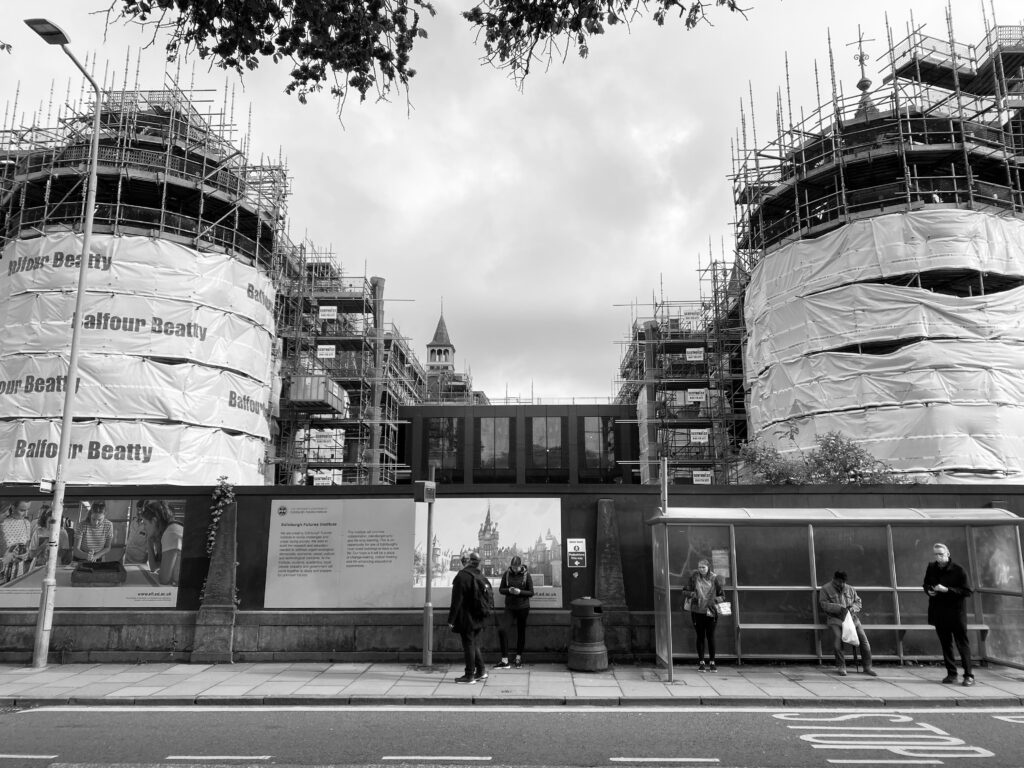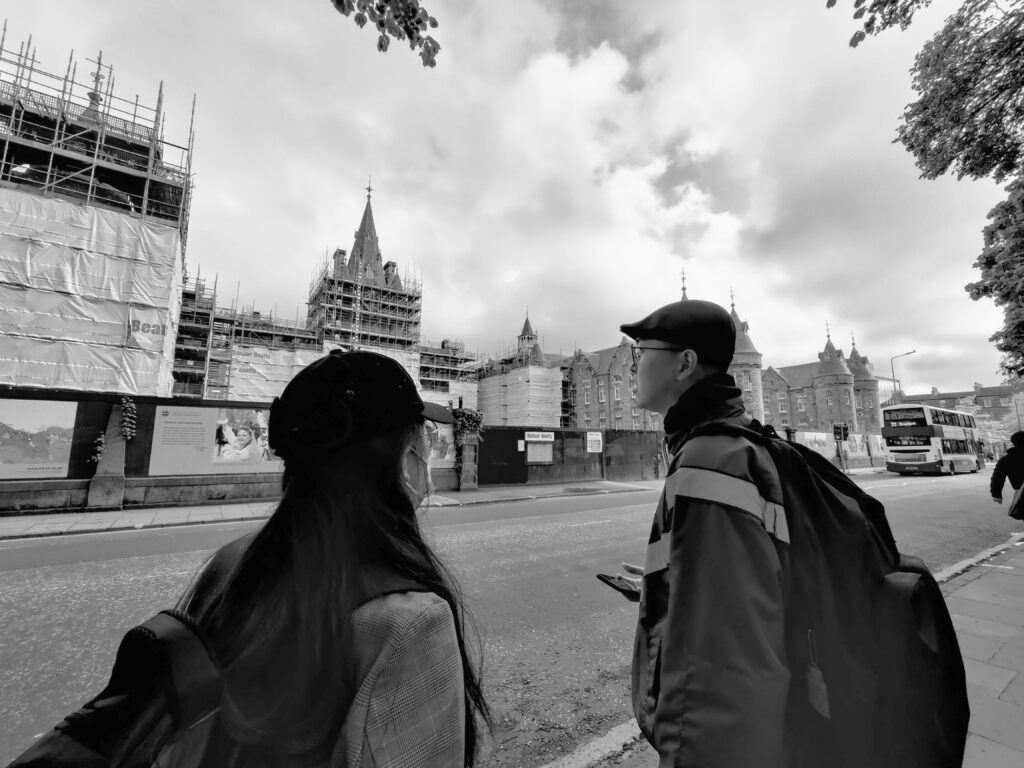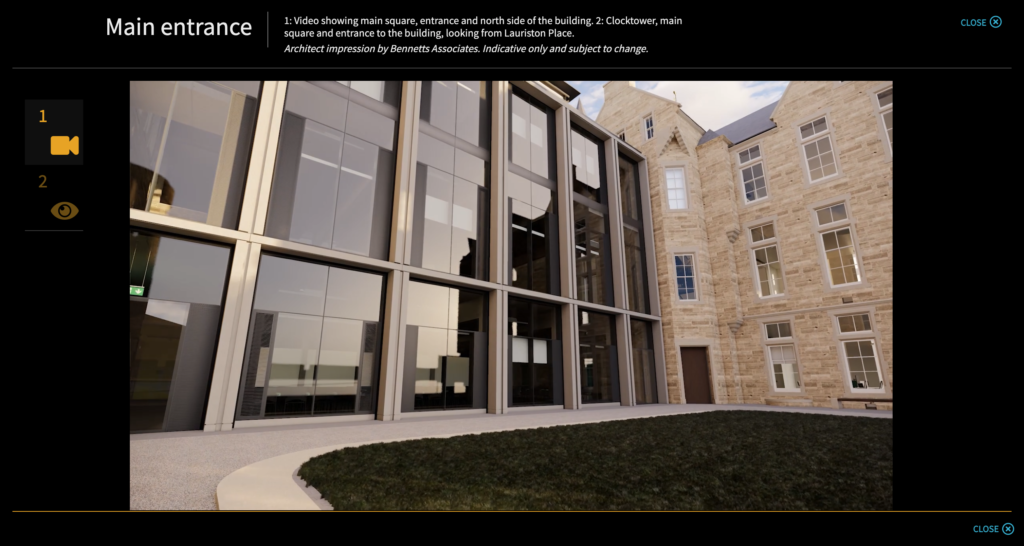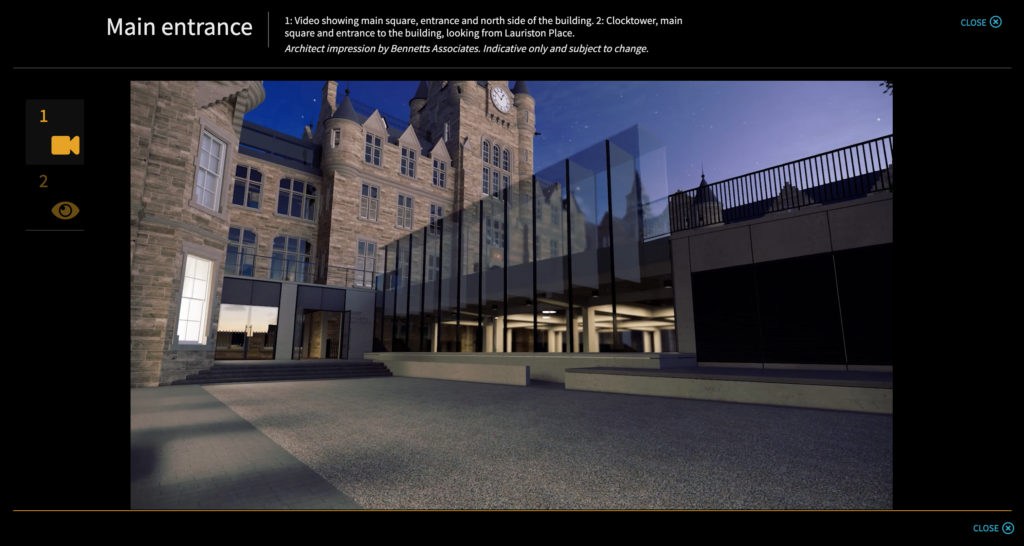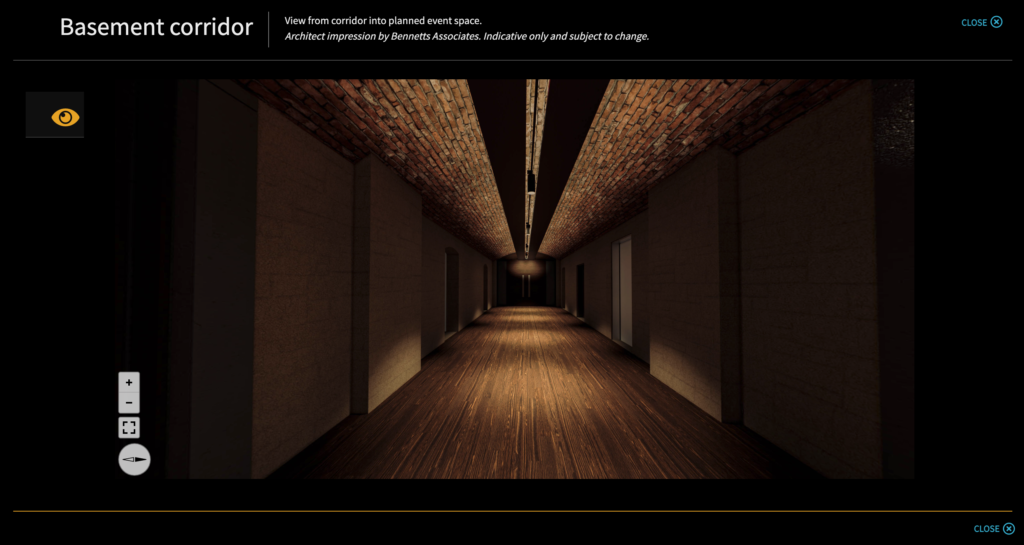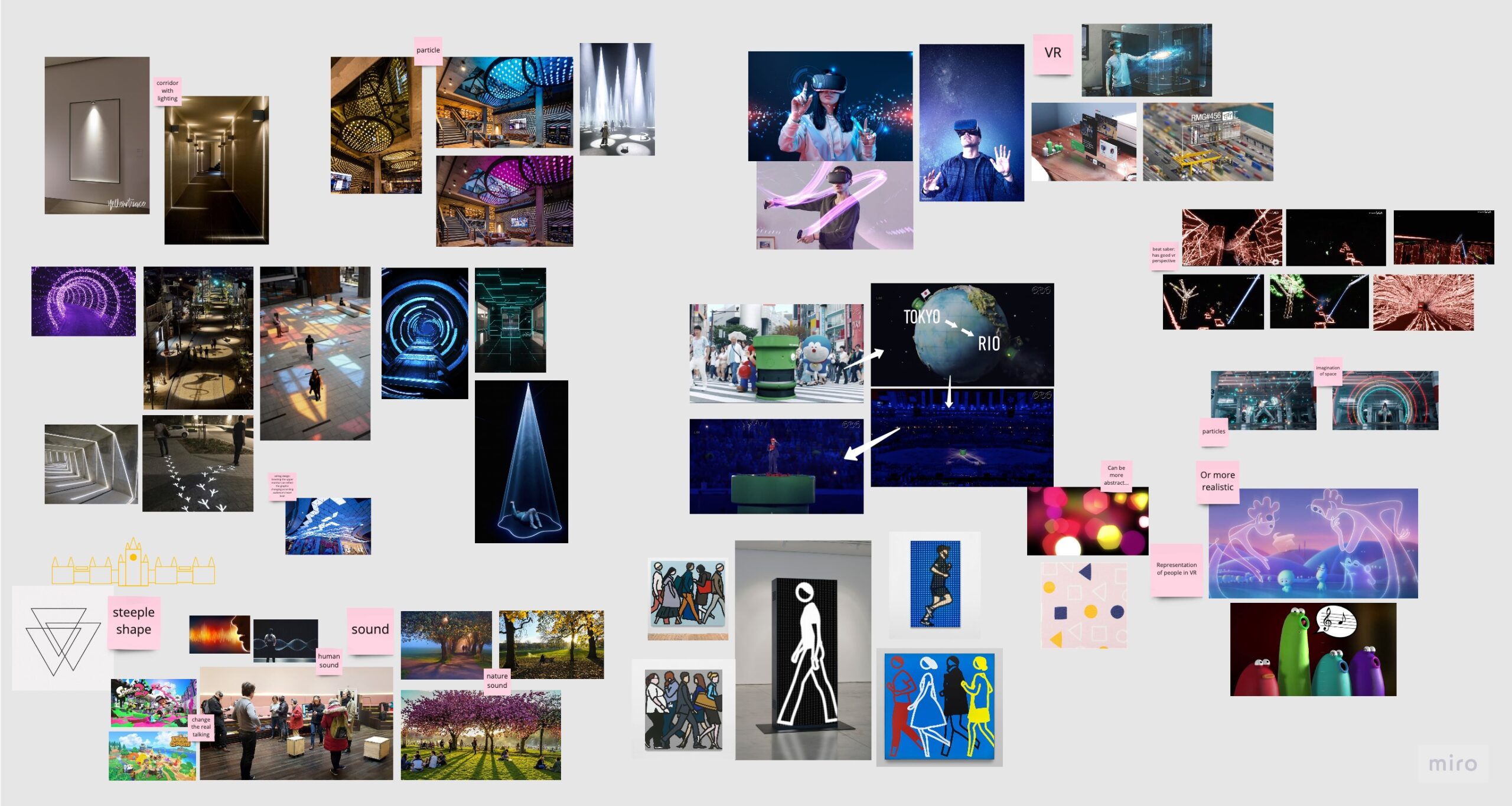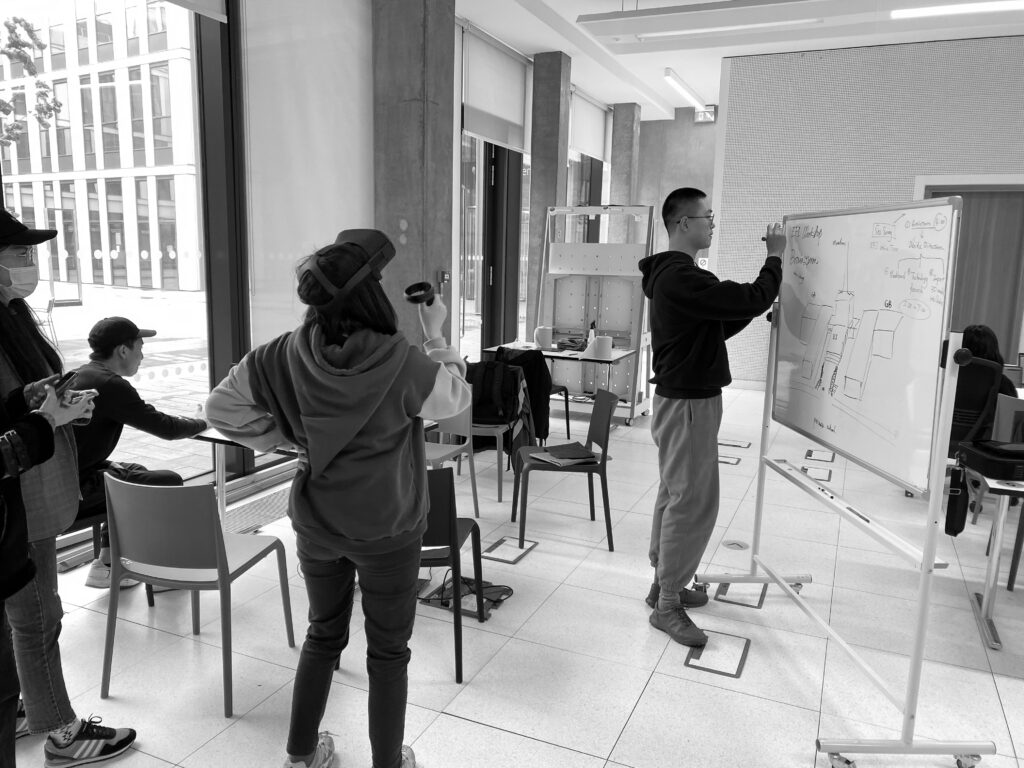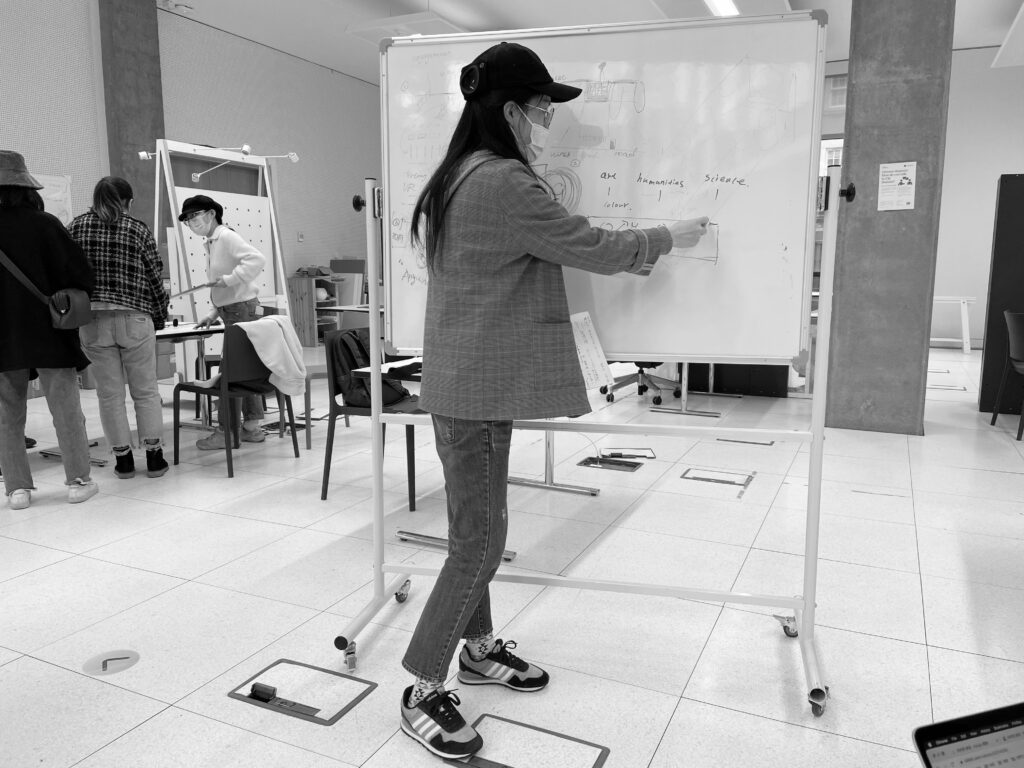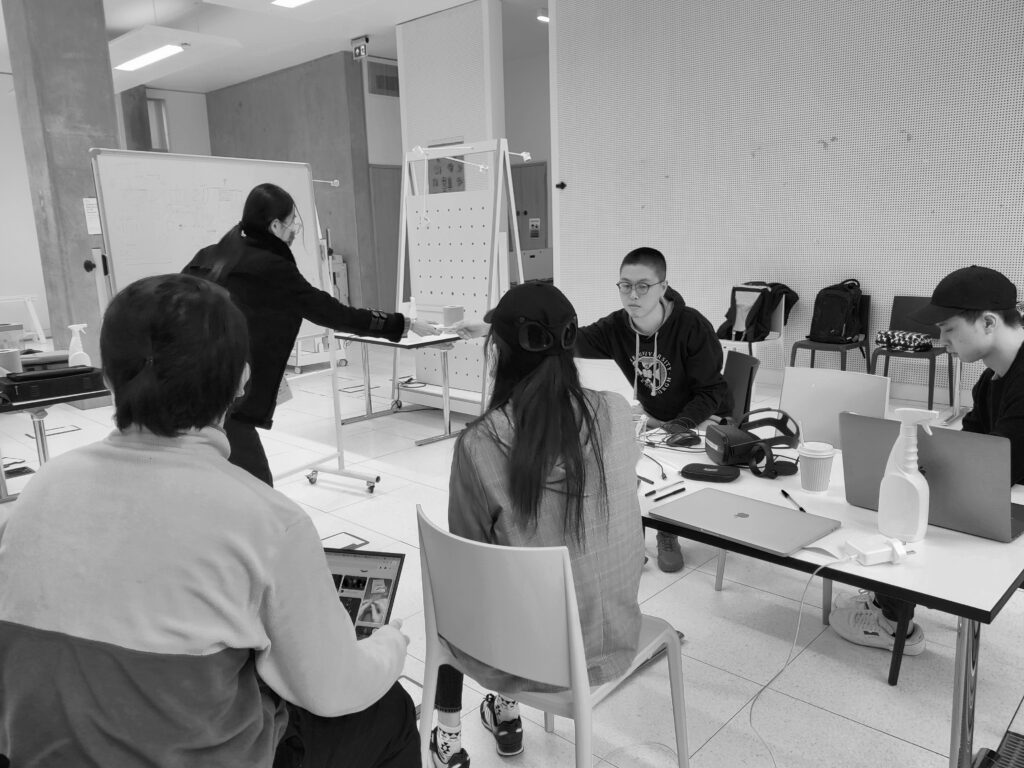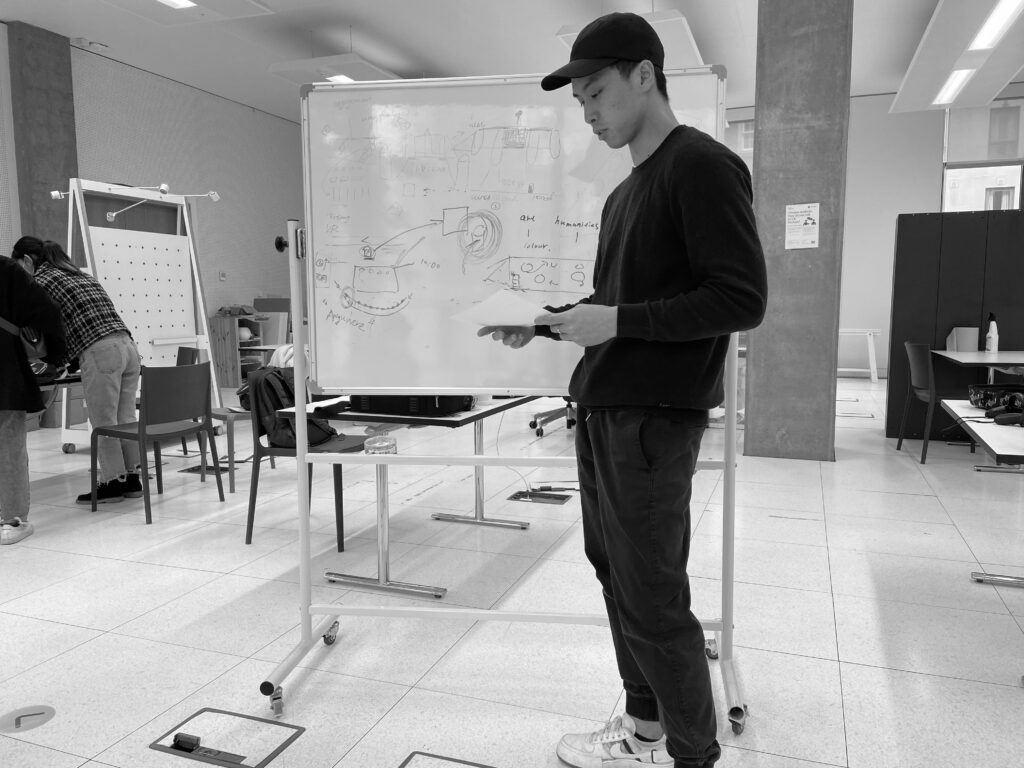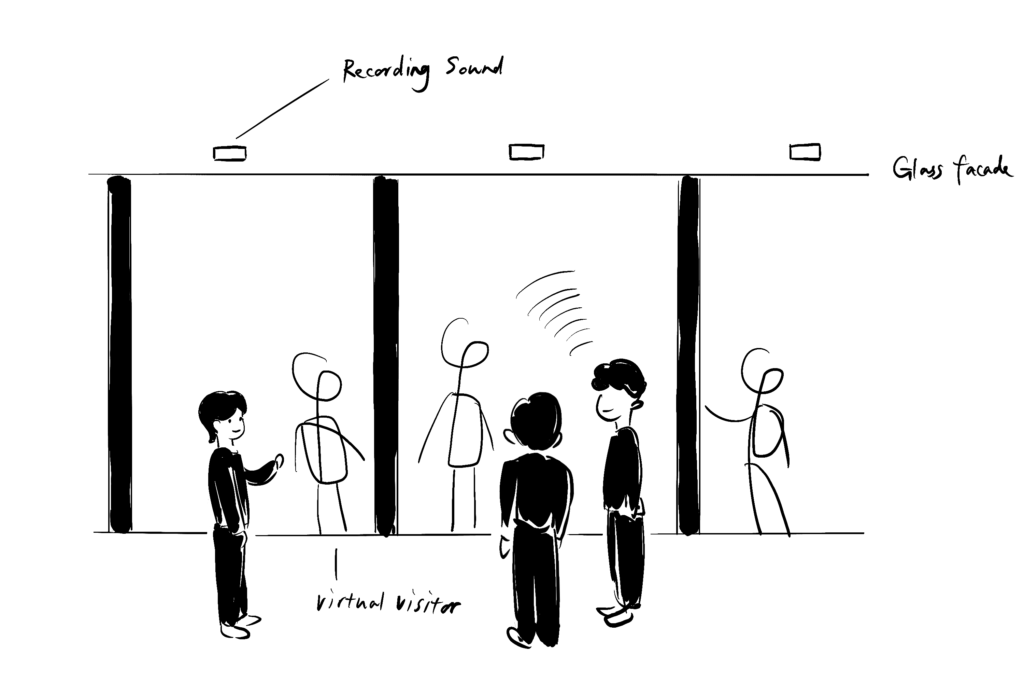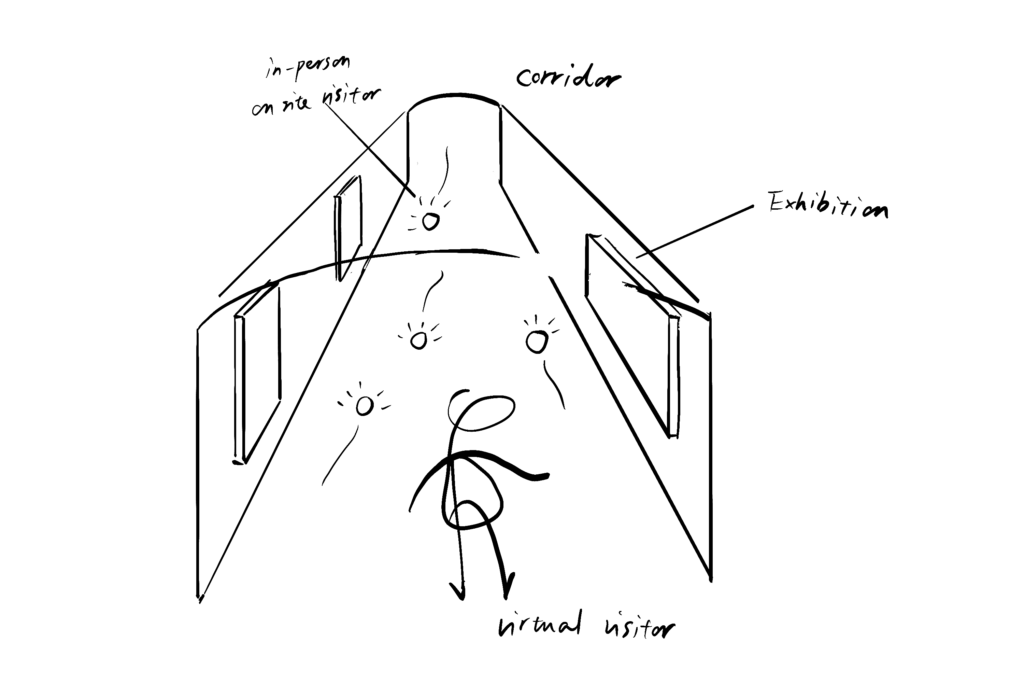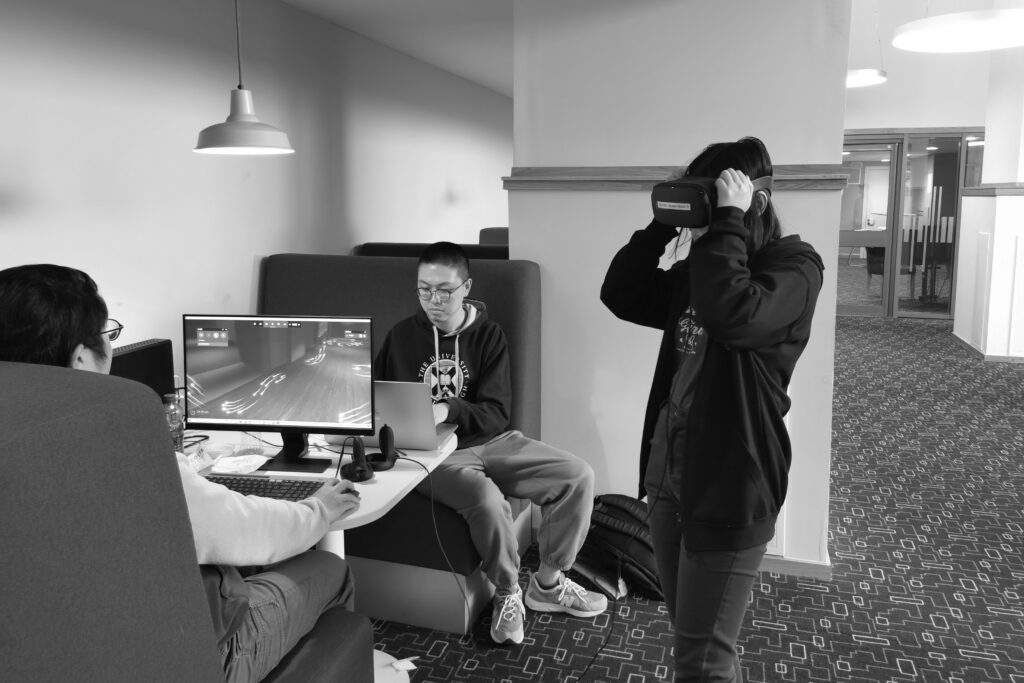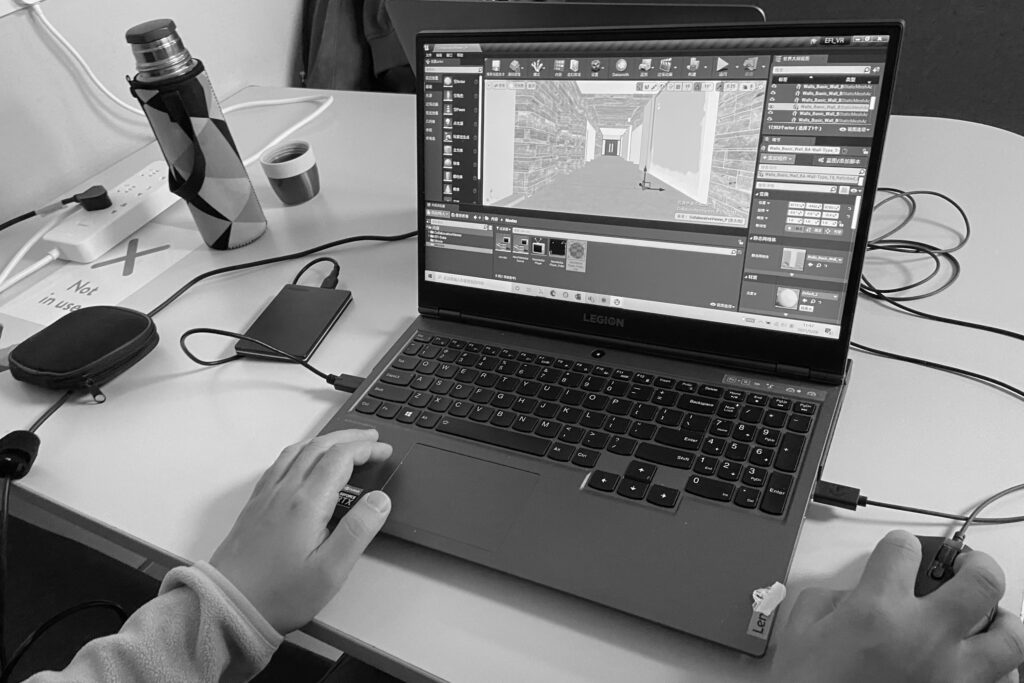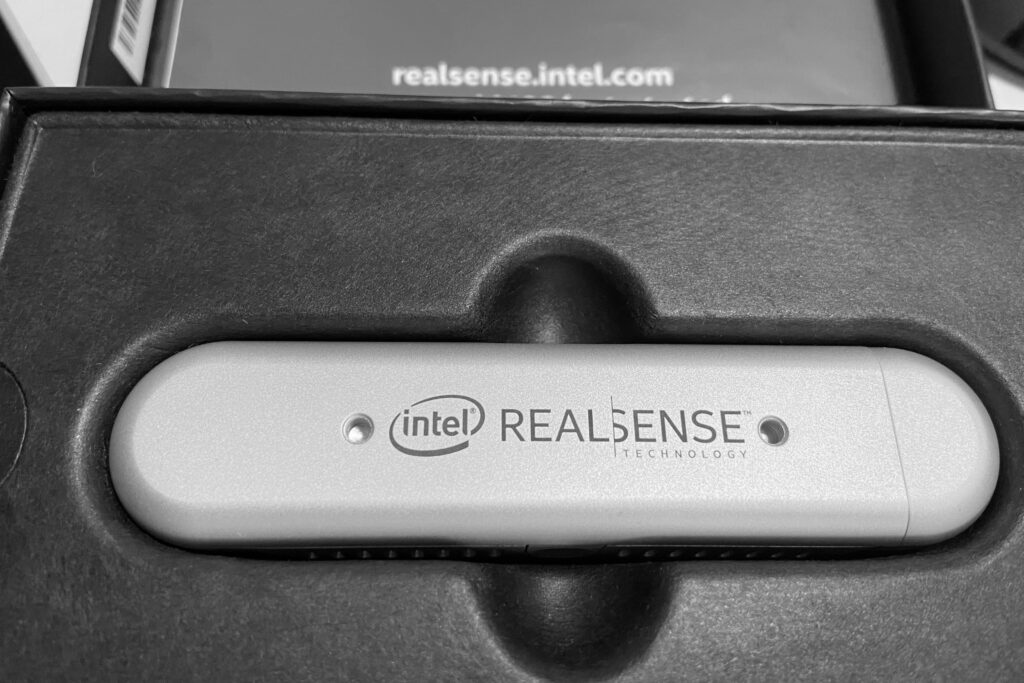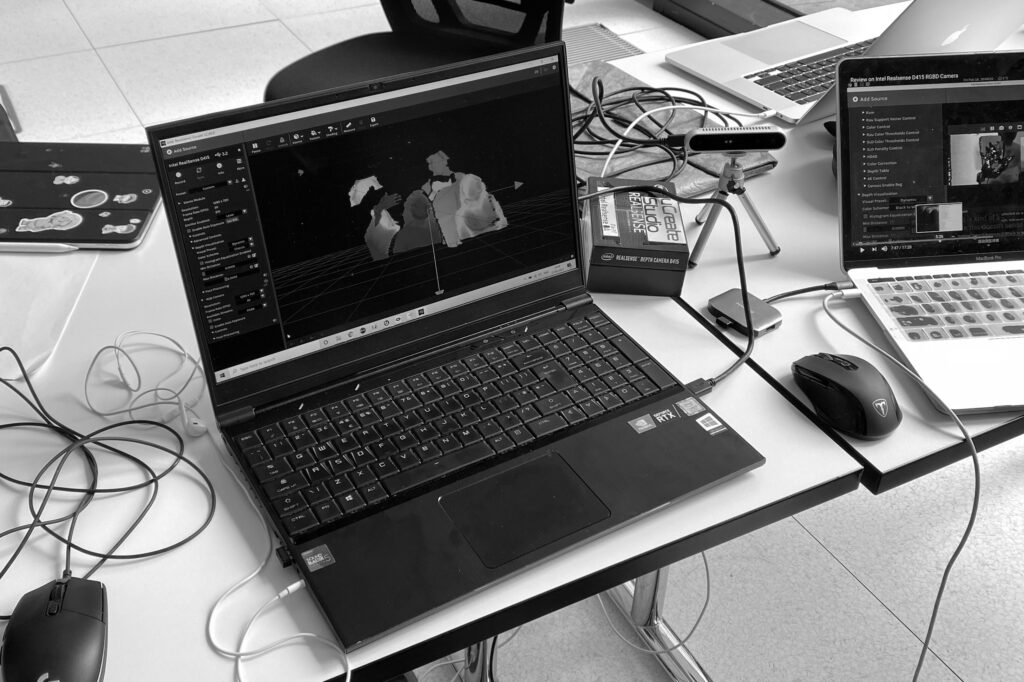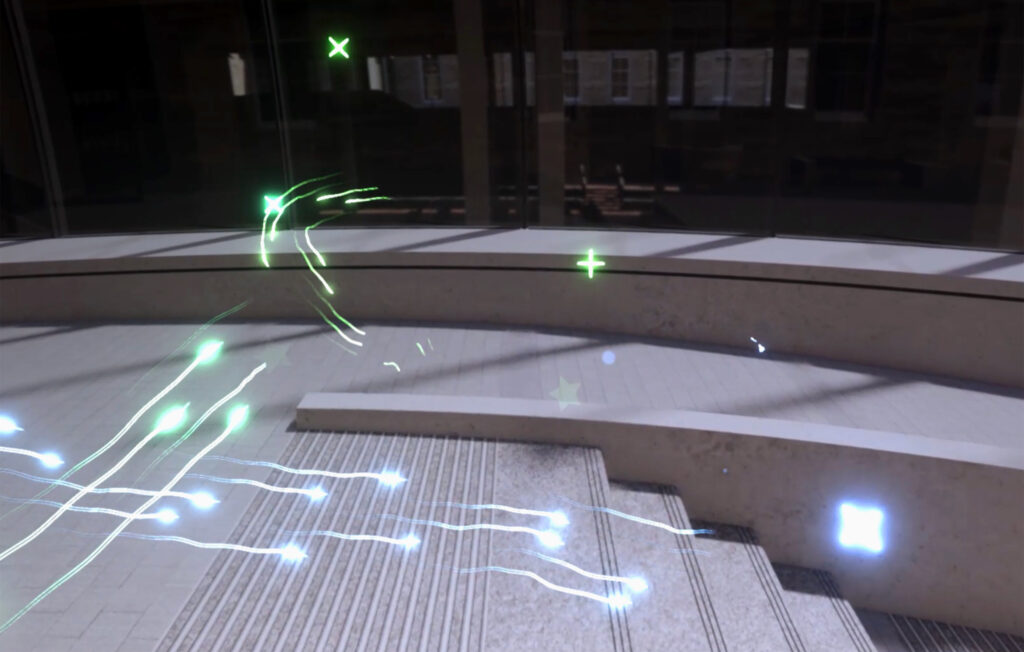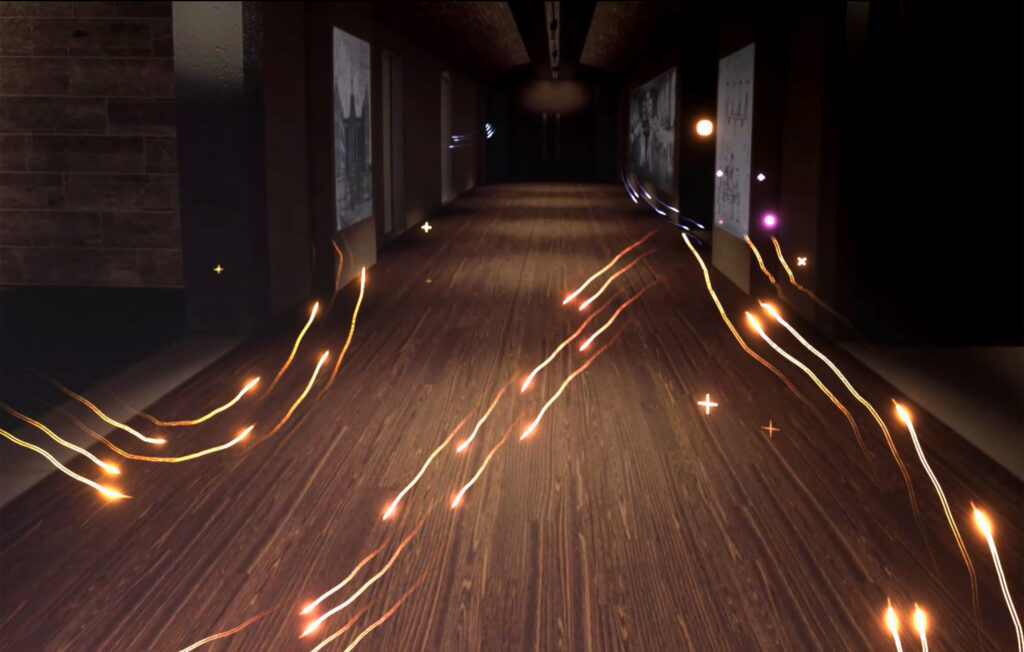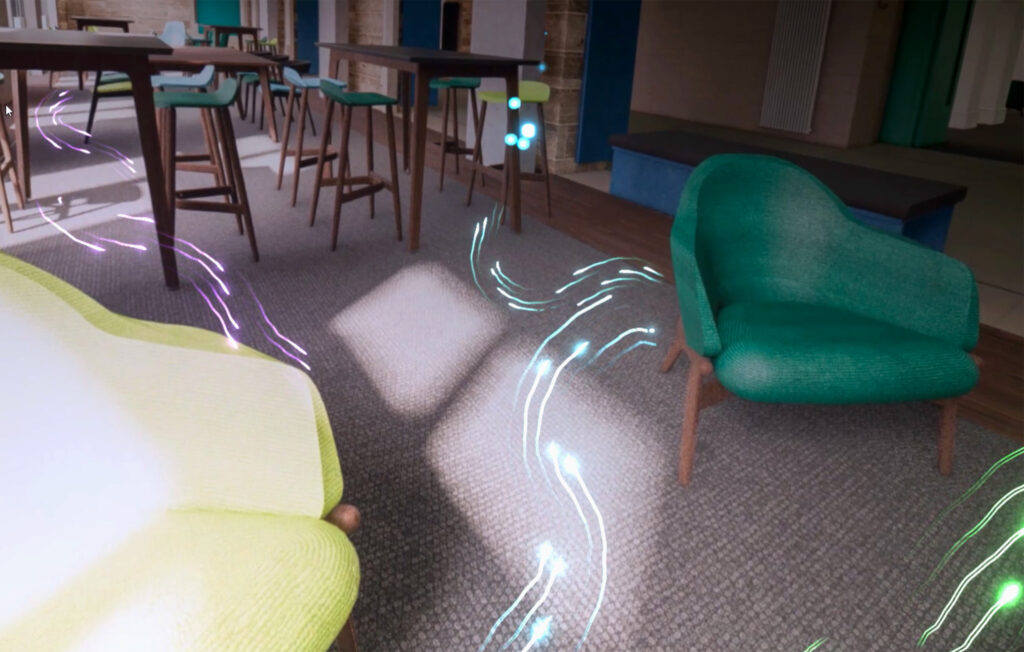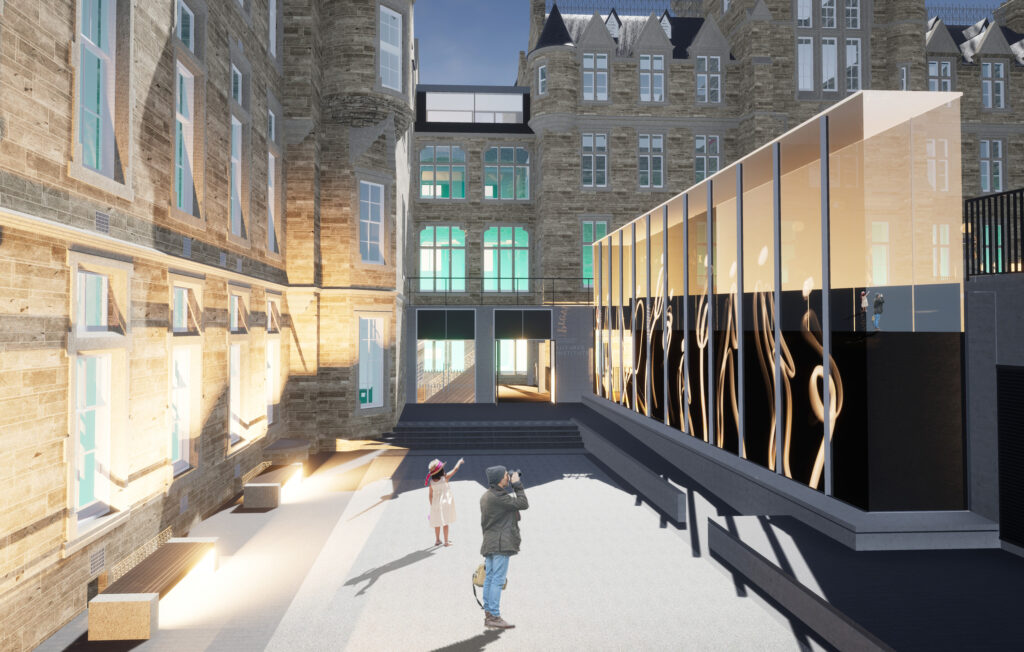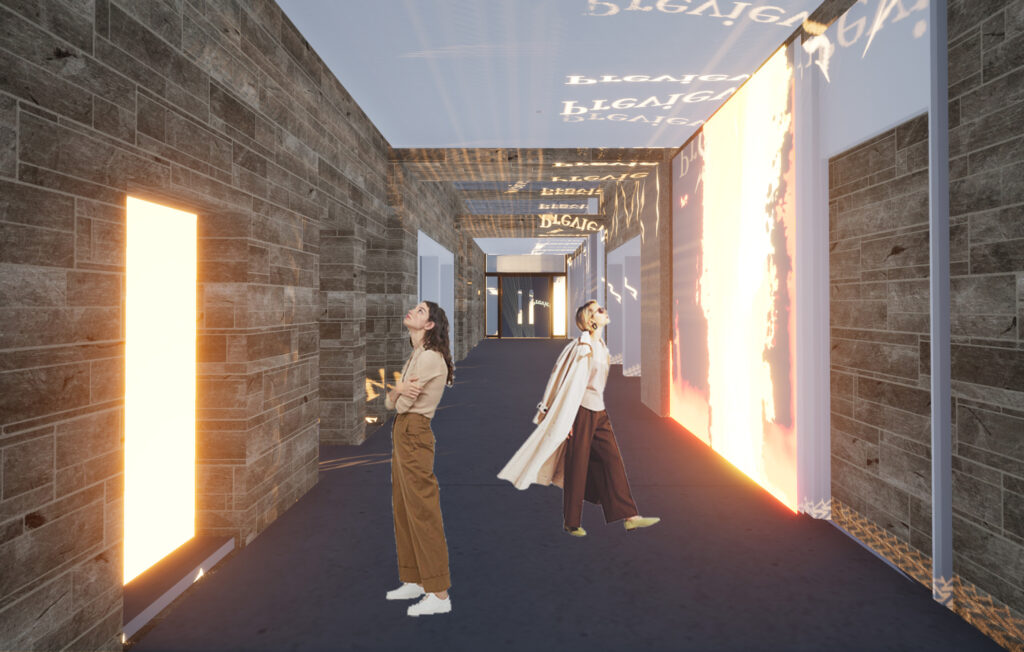EFInity: Bringing harmony between the virtual and real world.
Chloe Lei, Guanqiu Huang, Kaiyan Li, Linsen Liu, Ruting Xu, Wayne Wu, Yue Sui
Themes & Goals
The aim of the project, EFInity, is to allow visitors of the Edinburgh Futures Institute (EFI), whether virtual or on-site, to be able to encounter one another and feel as though they are all in the same space. During the pandemic, there has been a sharp rise in technology being developed to allow people to easily meet one another wherever they are in the world. However, many of these platforms only let us see each other on 2D screens. VR technology has the added potential of allowing interactions to happen in a 3D space, and it brings the environment and people that you encounter to life, creating a fully immersive experience.
EFInity engages the visual and auditory senses to create an immersive environment for both virtual and on-site visitors. We wanted visitors to not just interact with other people, but to interact with the EFI building itself, by integrating technology into the building’s infrastructure.
History, Present, and Future of the EFI
The former Royal Infirmary. Background image from 1878 reproduced with permission from Peter Stubbs, EdinPhoto.org.uk
The location of the project is in the Edinburgh Futures Institute (EFI), which was once home to the Royal Infirmary, and is now in the process of being renovated by the University of Edinburgh into state-of-the-art teaching facilities, spaces for businesses and industry partners, as well as exhibitions and performances spaces. One of the core pillars of the EFI is interconnectedness: bringing people together from a diverse range of places and disciplines. Above the main entrance of the EFI will be the pledge, ‘patet omnibus’ — open to all. The EFI is also future-facing—a place for creation and innovation. We wanted to carry these approaches of interconnectedness and innovation into our project, by amplifying the affinity between online and offline visitors of the soon-to-be-built EFI.
Design Process
Site survey
On-site survey
To get a feel for the building site and space within and surrounding the EFI, we surveyed the building site, visited the online tour of the EFI, and studied the building plans. During this process, our group found the main corridors and glass facades to be particularly interesting features of the building. As a transit space, the corridors are the passageway between different areas of the EFI and will therefore see many people passing through, and so we wanted to make this space fun and interesting. The glass facades are also particularly striking as it acts as a window, showing onlookers a glimpse of the space of the corridor within the EFI. Together, these two spaces are ones of reception and welcoming, which we felt were fitting for our project and its aims.
The EFI online tour
Inspiration
The mood board
The name of our project is EFInity, and if there is one word to describe its theme, it is encounter. It is inspired by many things, including Journey, a game that appears to be a single-player game, but players can meet other players who are playing it at the same time by chance. Other inspirations include people walking through the city as drawn by Julian Opie, and the Tokyo 2020 show at the closing ceremony of the Rio Olympics - in this show, a magical pipe that connects Tokyo and Rio. And what our ‘pipeline’ wants to connect is the virtual world and the real world.
Brainstorm and Ideation
Brainstorming
After brainstorming, we settled on an initial idea from which we sketched out two different perspectives of the scene. One from the viewpoint of the on-site visitors (in the real world) and one from the viewpoint of the virtual visitors (in the virtual world).
The on-site visitors and the virtual visitors will visit the building at the same time in different locations and meet in a special way: the images of the virtual visitors will appear on the real glass facade and the walls of the corridors when they pass through these spaces, and they will ‘accompany’ the on-site visitors on their tour of the building. On the other hand, the trajectory of the on-site visitors’ tour becomes a number of glowing lines that appear in real-time in the virtual 3D world and are perceived by the virtual visitors.
The sketches of two different perspectives: on-site visitors and virtual visitors
Research
Visuals
We knew we wanted a display on the glass facade that would complement the EFI building, and LED transparent screens appeared to be ideal. The unique material, structure, and installation allow it to have 60-95% transparency, meaning the presence of virtual visitors could clearly be seen on the glass, while still letting natural sunlight shine into the building.
Transparent LED displays, http://www.clearleddisplays.com/products/clearled_products/
Sound
We knew we wanted virtual visitors to not only see other on-site visitors, but to hear them as well, to really feel the presence of others. After all, exhibition spaces are rarely silent and there is always noise, even if it is just the faint shuffling of feet. We were faced with the issue of not being able to record and playback the environment directly in the EFI, as this would breach privacy issues.
After researching various methods of sound source modeling, we decided to record some live sounds in real-time and synthesize them into other forms of sound, eliminating what could be discerned from the conversation (to respect the privacy of the attendees), and play it back. To experiment with this, we recorded sounds of speech, traffic, and walking, and processed these sounds into ambient noise, and we even tried to recreate the tonal gibberish spoken in Animal Crossing (Aninmalese). In the end, we felt that the animalese-type speech was too abstract and didn’t fit the tone of our project, and we instead chose to more closely mimic the ambient background noise that would normally be heard in public spaces.
VR tools
Exploring Tilt Brush, UE4 and Intel RealSense Depth Camera
We tried out a variety of different VR tools in order to create the prototype. We imported panoramas of different spaces of the EFI into Tilt Brush, where we drew the trajectories of live visitors with various dynamic brushes to simulate what a visitor in the virtual world would see.
We experimented with the Intel RealSense Depth Camera to capture people walking around and used the recorded images to create scenes in UE4 as seen by the on-site visitors — the outlines of virtual visitors passing by at the same time are displayed on the glass facade and walls of corridors.
Final Outcome
What would I experience as a virtual visitor of the EFI?
Prototype of the scene from the virtual visitor’s perspective, from the demo video
As a virtual visitor, you can explore a virtual 3D version of the EFI through a VR headset or compatible device. You start by standing in the courtyard in front of the EFI, and you are guided through the building, and into the main corridor where you can view exhibits displayed virtually in the 3D space. You can also see the other on-site visitors, who are represented as glowing spheres moving and gliding through the space.
When you are nearby other people, you can hear their speech translated as ambient sounds. These come from real live recordings from the building, translated in real-time. it was really important to our group to create this multi-sensory experience, as we wanted to use the full potential of VR, and to as closely as possible recreate how it feels to interact with people when you are in the same physical space as them.
What would I experience as an on-site visitor of the EFI?
Prototype of the scene from the virtual visitor’s perspective, from the demo video
As someone who is present at the EFI in person, before using the entrance which leads you to the main corridor where the main exhibition is held, you can see the glass facade from the outside, and projected onto the glass are moving animated figures of virtual visitors who are also present. This is designed to entice you to enter and see what is happening in the building. Once in the main corridor, you can see all of the art that is on display, while also feeling the presence of the virtual visitors. The virtual visitors will appear like they did when viewed from outside the EFI, meaning onlookers from both inside and outside the building can see the glass display.
Takeaway & Future Work
EFInity is a conceptualisation of how we imagine interactions in the EFI could take place in the near future. The project spans across the fields of architecture, interaction design, digital media, and virtual reality, and our team members come from three different backgrounds: Architecture, Design Digital Media, and Design Informatics (which is where our team name ADD comes from). We found this interdisciplinary collaboration to be the most valuable part of the project, allowing us to come up with more ideas and finish the project in a short time through a division of tasks.
Our entire project had to be completed in one week, and so many of the ideas we have mentioned are only preliminary. We believe there are many directions that the project could go. For example, we imagined our EFInity existing at any point in the day, but with its focus on bright lights and LED displays, it may work best as a night-time attraction. Could we make the EFI a futuristic landmark in the night?
Another consideration is that as people can visit from across the world, visitors may be in different time zones. When there are no on-site visitors at night, virtual visitors will still be able to visit the building, and so it could be possible to display the figures of these visitors on the building exterior throughout the night, to create a feeling of inhabitance — even ghostliness — in the EFI.
Finally, how might interaction design and architecture co-exist? Could projects such as the EFI integrate interaction design, into the very infrastructure of the building, from the beginning of its conception — rather than seeing technology as something to be added on top of existing structures? We'd like to explore some of these directions in the future with our project, EFInity.
